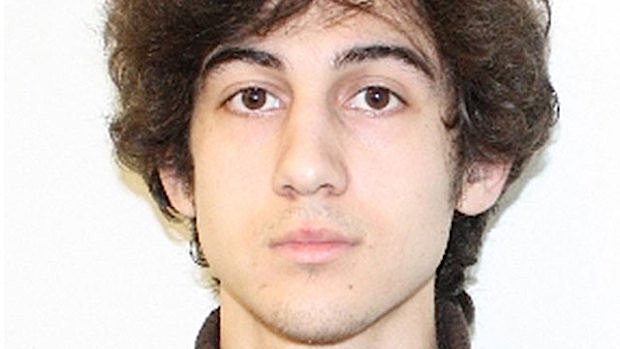The Boston bomber, Dzhokhar Tsarnaev, was today sentenced to death by lethal injection. The jury reached the decision in the city where the killer, 19 at the time, blew up the marathon, killing three and injuring 260.
I feel no sympathy for him, but nor do I support the death penalty and I’m constantly amazed by the hash the US authorities make of a method of execution that sounds simple. Here is a list of 46 botched executions since 1982. This one from last year almost defies belief in its amateurishness:
April 29, 2014. Oklahoma. Clayton D Lockett. Lethal Injection. Despite prolonged litigation and numerous warnings from defence attorneys about the dangers of using an experimental drug protocol (including a paralytic), Oklahoma went ahead and scheduled the executions of Clayton Lockett and Charles Warner. Plans for the execution and the drugs used were cloaked in secrecy, with the state refusing to release information about the source and efficacy of the lethal drugs, making it impossible to accurately predict the effects of the combination of drugs. Nonetheless, Oklahoma Governor Mary Fallon pressured the Courts to allow the execution, a bill was introduced in the Oklahoma House of Representatives to impeach the Justices who had voted to stay the execution, and the state Supreme Court allowed the executions to go forward.
Mr Lockett was the first who was scheduled to die. An hour before the execution began, the governor was notified that the executioner (a ‘phlebotomist’) was having problems finding a usable vein, but she did not intervene. After an hour, a vein was finally found in Mr Lockett’s ‘groin area’, and the execution went forward. Ten minutes after the administration of the first drug, a sedative, the physician supervising the process (whose very presence violated ethical standards of several medical organisations) announced that the inmate was unconscious, and therefore ready to receive the other two drugs that would actually kill him. Those two drugs were known to cause excruciating pain if the recipient was conscious. However, Mr Lockett was not unconscious. Three minutes after the latter two drugs were injected, ‘Lockett began breathing heavily, writhing on the gurney, clenching his teeth and straining to lift his head off the pillow’. Officials then lowered the blinds to prohibit witnesses from seeing what was going on, and 15 minutes later the witnesses were ordered to leave the room.
Twenty minutes after the first drugs were administered, the Director the Oklahoma Department of Corrections halted the execution, and issued a two-week stay (later extended by extensive litigation) for the execution of Mr Warner. Mr Lockett died 43 minutes after the execution began, of a heart attack, while still in the execution chamber.
If the subject wasn’t so grim I’d be tempted to quote the internet meme ‘You had one job…’
Note the bit I’ve emphasised in bold. Lethal executions in American typically involve three drugs: an anaesthetic, often the barbiturate sodium thiopental; a paralysing agent such as pancuronium bromide that stops breathing; and potassium chloride to induce a heart attack. This information is well known – so why was the identity of the drugs in the Lockett case ‘cloaked in secrecy’?
One reason may be that someone has to manufacture these drugs and Big Pharma isn’t keen on that sort of publicity.
Now, we don’t actually know if Tsarnaev will die at all. Executions for even the most savage murderers can be halted by appeals – in the Lockett case, grotesquely, the ruling was issued after the first drugs had been injected – and by the time the Boston Bomber is due to be killed the law may have changed. In fact, Massachusetts doesn’t have the death penalty at all, so you’d expect him to receive a life sentence instead.
But he’s being moved to a federal prison in Terre Haute, Indiana, where they do have the death penalty and, according to a local news source, the state ‘has a new lethal injection drug to be used in next execution’.
Its called Brevital, a brand name for methohexital, a barbiturate used as the initial anaesthetic. Previously they’d used sodium thiopental. Why the switch? Simple: they’d run out of it – there’s a nationwide shortage of the drug (forcing some states to ask Europe to supply a lethal substitute). And this explains why the Lockett execution in Oklahoma went so gruesomely wrong. They’d run out of it there, too, and apparently used a substitute that didn’t work properly.
Brevital does do the job – which is embarrassing if you happen to make the stuff. Here’s a quote from a blog post by Kelsey Kauffman, a campaigner against the death penalty:
Par Pharmaceutical, the maker of Brevital, immediately protested, citing both medical and ethical concerns. The company noted that use of its drug in executions is ‘inconsistent with (Brevital’s) medical indications as outlined in its US Food and Drug Administration reviewed and approved product labelling’. It would also violate Par’s mission to ‘help improve quality of life’.
Even so, could Brevity be used to kill Tsarnaev? We don’t know if his execution, if it ever takes place, will be in Indiana – but even if it is, the answer is apparently no. Kauffman explains:
Indiana’s experiment will be short-lived. Par Pharmaceutical has now joined the embargo on use of its products in executions. Eventually, Indiana will be forced to take the second option: to search for a ‘compounding’ pharmacist who will create his own deadly brew that will, however painfully or slowly, cause the death of the recipient.
Only a handful of pharmacists in the entire nation have entered into such a bargain and all have insisted that it be done ‘on the down low’ [i.e., their identities are kept secret].
What a grubby business. What will American states do if their compounding pharmacists change their minds? Order lethal drugs off the internet?






Comments